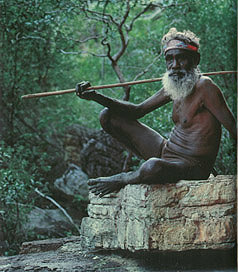
2. Contemporary anthropology
Contemporary anthropology combines the elements of the "blueprint" theory of myth with structuralism. Myths are encoded messages that teach-by means of mediating oppositions-how the society should be organized and warn of potential threats to its structure. The two major ways of organizing tribal societies-incorporative and confederate-are reflected in two different "mytho-logics" (monist and pluralist). The traces of these two logics can be found also in the cultural production of a contemporary society, e.g., Hollywood films.
Additional text on the Cree social organization in Adobe Acrobat 4 (pdf) format: Turner, Shamattawa... (hit CANCEL if asked for password): text 1; text 2; text 3
Bibliography and texts:
Turner, D.H. "Windigo Mythology and the Analysis of Cree Social Structure." Anthropologica 19, no. 1 (1977): 63-73.
---. Shamattawa: the Structure of Social Relations in a Northern Algonkian Band. Ottawa: National Museums of Canada, 1977.
---. "Hunting and Gathering: Cree and Australian." In Challenging Anthropology, edited by G.A. Smith D.H. Turner, 195-211. Toronto: McGraw-Hill, 1979.
---. "Direct Exchange Renewable in Alternate Generations" (Chapter 5), Australian Aboriginal Social Organization. Atlantic Highlands, NJ: Humanities Press, 1980, pp. 38-64.
---. Life Before Genesis: A Conclusion. Edited by D. Wiebe, Toronto Studies in Religion 1. New York, Frankfurt am Main: Peter Lang, 1987.
Videos: Cree Hunters of Mistassini (National Film Board of Canada, 1974); Ravenous (1999, excerpts); Australia's Aborigines (National Geographic Video, 1999); The Last Wave (P. Weir, 1977); selection of contemporary Hollywood films.
Listen to the sounds of didgeridoo!